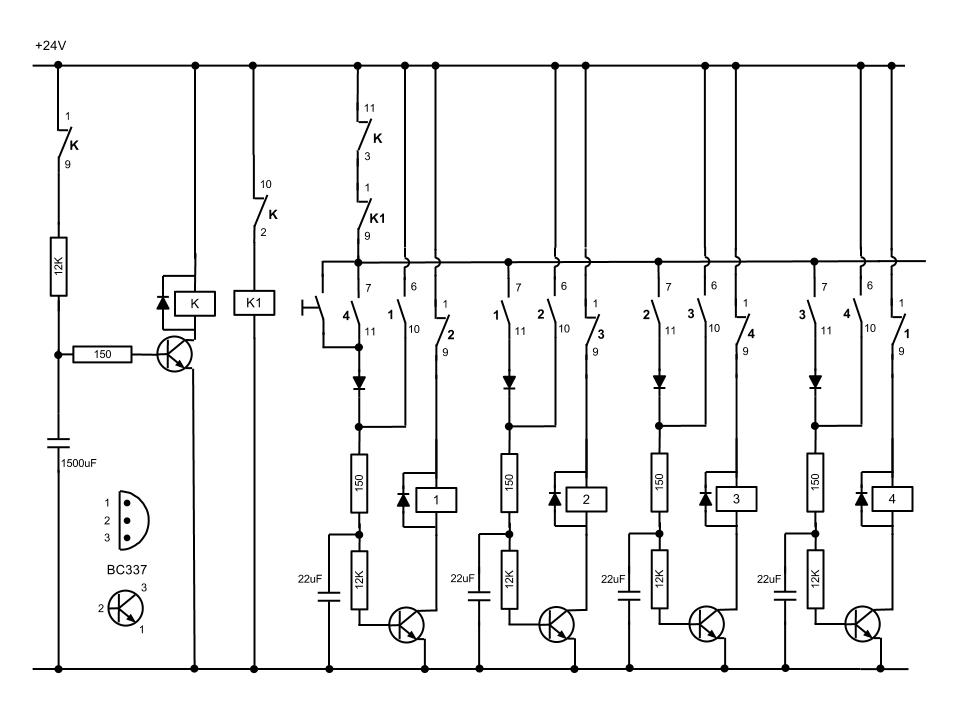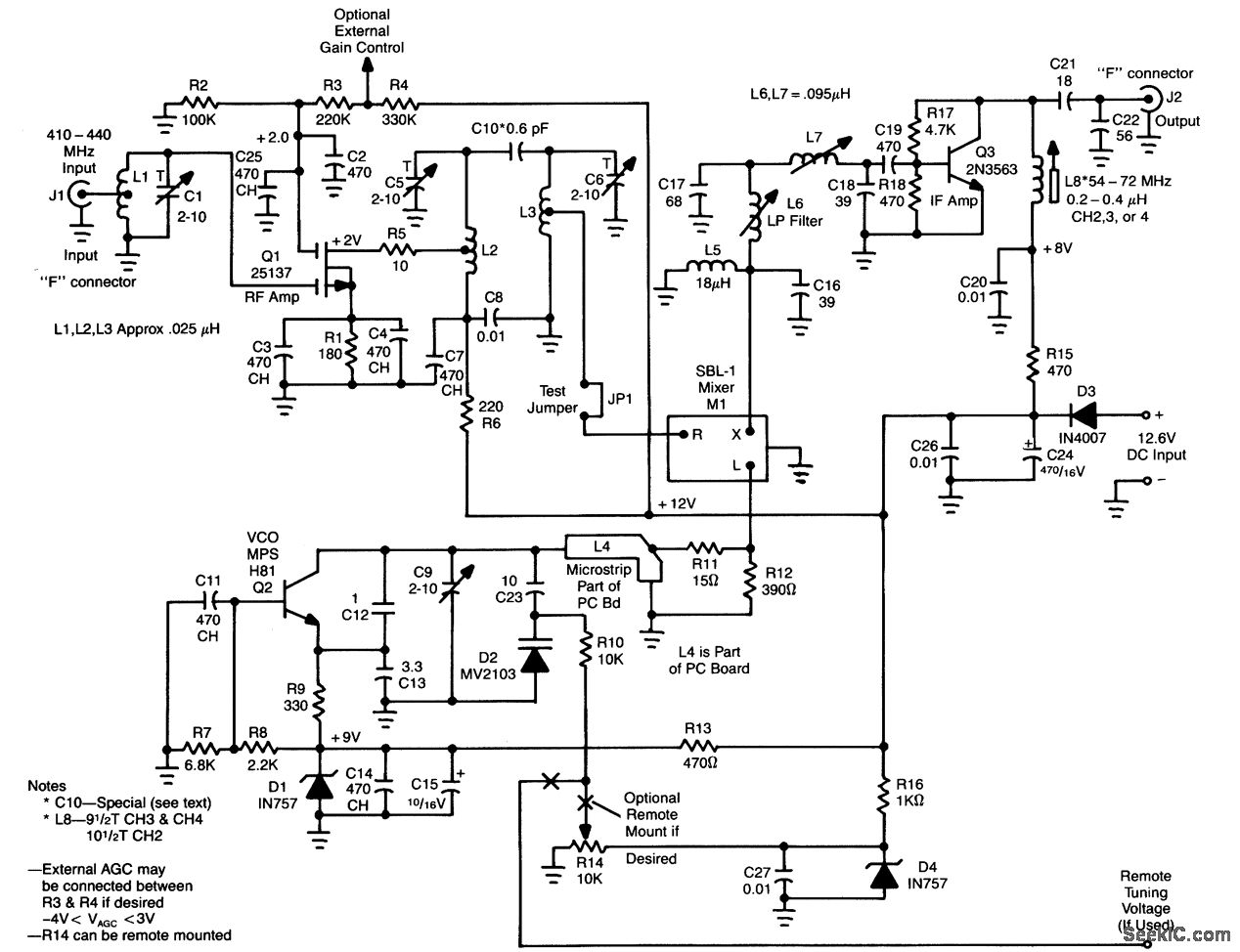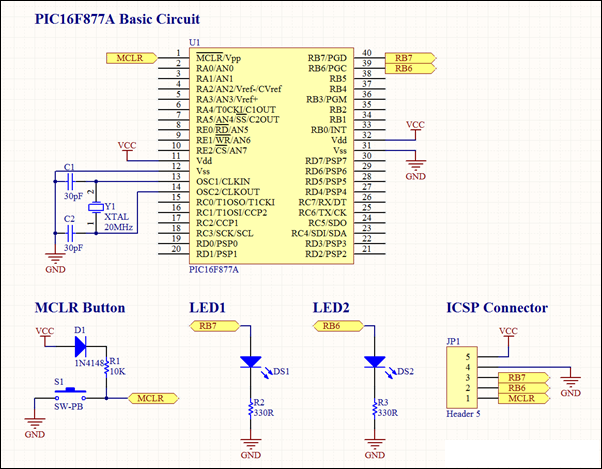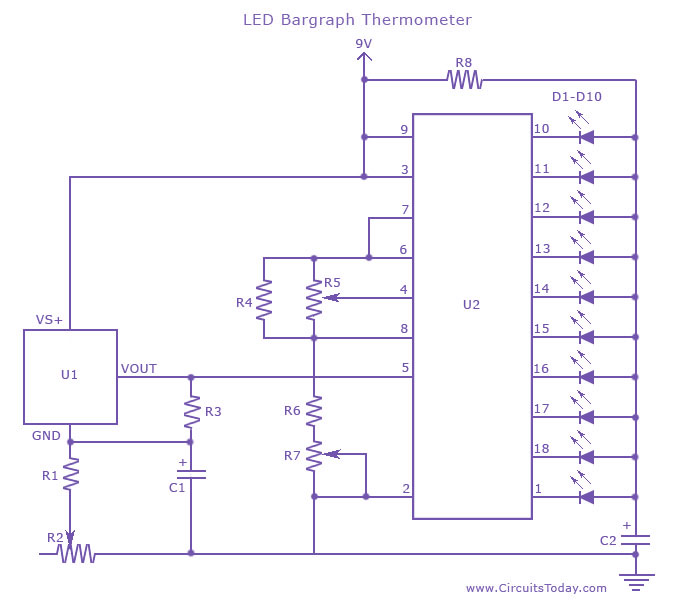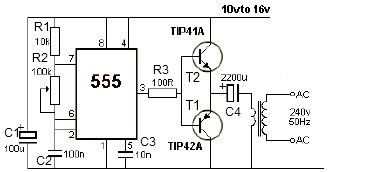
A serial to parallel converter using the AT89C2051
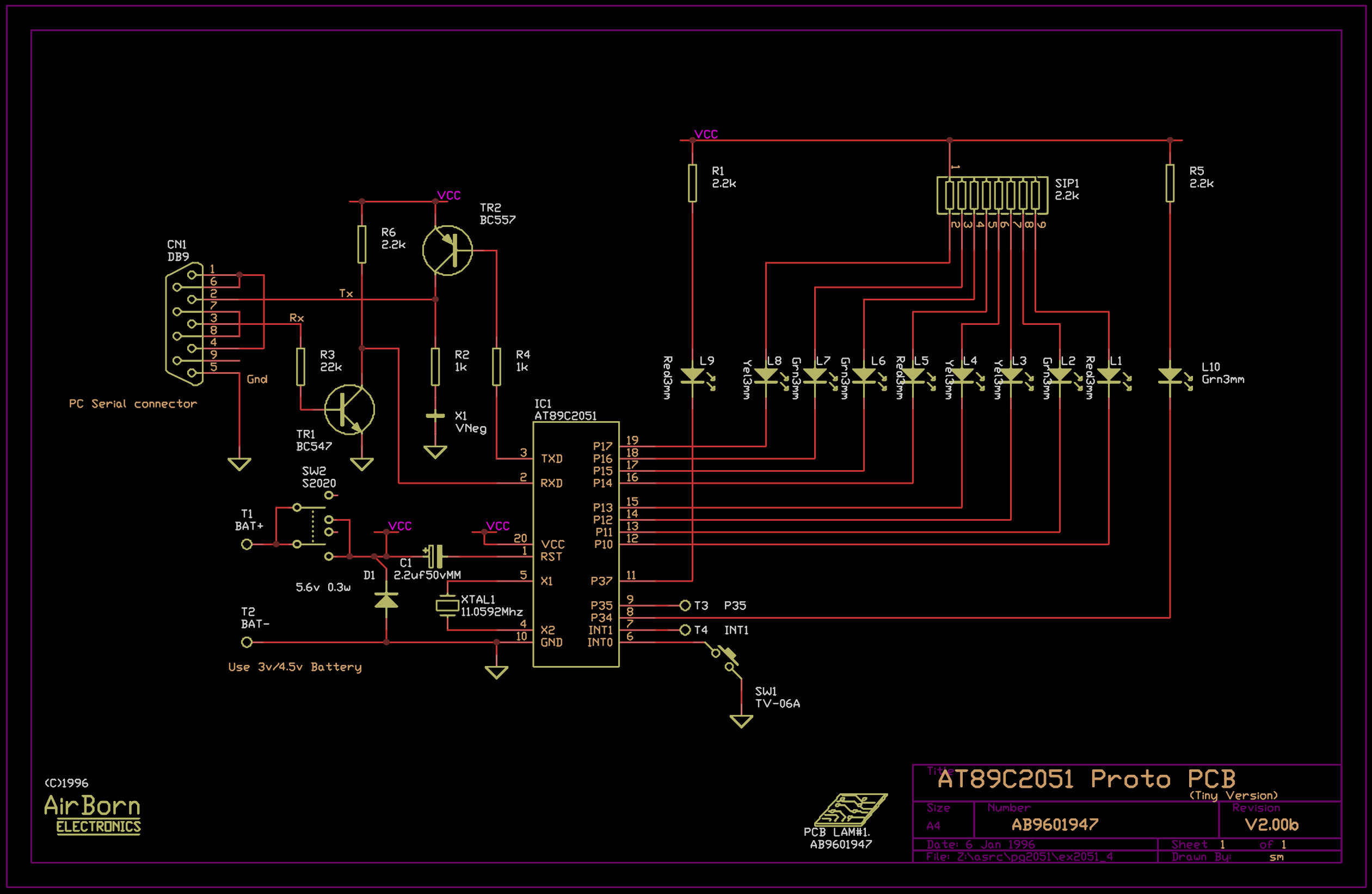
The example program included with the PG2051 evaluation kit is a basic serial to parallel converter written in 8051 assembler. This is probably a good example of the uses to which an AT89C2051 can be put - it would be hard to get a serial to parallel converter much simpler than the single 20 pin IC in this circuit. The program is meant to serve as a useful example of 8051 serial routines and other programming, whether or not you actually need a serial to parallel converter.
The circuit described is a straightforward implementation of a serial to parallel converter using the AT89C2051 microcontroller. The AT89C2051 is an 8-bit microcontroller from the 8051 family, featuring 2 KB of Flash memory, 128 bytes of RAM, and 15 I/O lines, which makes it suitable for simple control applications.
In this application, the microcontroller is configured to receive serial data through one of its I/O pins, typically using the UART (Universal Asynchronous Receiver-Transmitter) protocol. The serial data is received bit by bit and stored in a register within the microcontroller. Once a complete byte is received, the microcontroller converts the serial data into parallel format.
The circuit design includes the following key components:
1. **AT89C2051 Microcontroller**: The central processing unit that executes the serial to parallel conversion program. It is powered by a suitable voltage supply, typically 5V.
2. **Serial Input**: This input can be connected to any serial data source, such as a computer or another microcontroller. The data is usually transmitted at a specific baud rate, which must be configured in the microcontroller's firmware.
3. **Parallel Output**: The parallel output consists of the microcontroller's I/O pins configured to output the 8 bits of data simultaneously. These pins can be connected to other devices or circuits that require parallel data input.
4. **Clock Signal**: The microcontroller requires a clock signal to operate. This is typically provided by an external crystal oscillator connected to the microcontroller's oscillator pins.
5. **Programming Interface**: The circuit may include a programming interface to upload the firmware to the AT89C2051. This is often achieved through a simple serial connection or a dedicated programming tool.
The program written in 8051 assembler handles the initialization of the UART for serial communication, the reception of data, and the control of the output pins to reflect the received data in parallel form. This example serves as an educational tool for understanding serial communication and microcontroller programming, demonstrating the versatility of the AT89C2051 in handling simple data conversion tasks.The example program included with the PG2051 evaluation kit is a basic serial to parallel converter written in 8051 assembler. This is probably a good example of the uses to which an AT89C2051 can be put - it would be hard to get a serial to parallel converter much simpler than the single 20 pin IC in this circuit.
The program is meant to serve as a useful example of 8051 serial routines and other programming, whether or not you actually need a serial to parallel converter. 🔗 External reference
The circuit described is a straightforward implementation of a serial to parallel converter using the AT89C2051 microcontroller. The AT89C2051 is an 8-bit microcontroller from the 8051 family, featuring 2 KB of Flash memory, 128 bytes of RAM, and 15 I/O lines, which makes it suitable for simple control applications.
In this application, the microcontroller is configured to receive serial data through one of its I/O pins, typically using the UART (Universal Asynchronous Receiver-Transmitter) protocol. The serial data is received bit by bit and stored in a register within the microcontroller. Once a complete byte is received, the microcontroller converts the serial data into parallel format.
The circuit design includes the following key components:
1. **AT89C2051 Microcontroller**: The central processing unit that executes the serial to parallel conversion program. It is powered by a suitable voltage supply, typically 5V.
2. **Serial Input**: This input can be connected to any serial data source, such as a computer or another microcontroller. The data is usually transmitted at a specific baud rate, which must be configured in the microcontroller's firmware.
3. **Parallel Output**: The parallel output consists of the microcontroller's I/O pins configured to output the 8 bits of data simultaneously. These pins can be connected to other devices or circuits that require parallel data input.
4. **Clock Signal**: The microcontroller requires a clock signal to operate. This is typically provided by an external crystal oscillator connected to the microcontroller's oscillator pins.
5. **Programming Interface**: The circuit may include a programming interface to upload the firmware to the AT89C2051. This is often achieved through a simple serial connection or a dedicated programming tool.
The program written in 8051 assembler handles the initialization of the UART for serial communication, the reception of data, and the control of the output pins to reflect the received data in parallel form. This example serves as an educational tool for understanding serial communication and microcontroller programming, demonstrating the versatility of the AT89C2051 in handling simple data conversion tasks.The example program included with the PG2051 evaluation kit is a basic serial to parallel converter written in 8051 assembler. This is probably a good example of the uses to which an AT89C2051 can be put - it would be hard to get a serial to parallel converter much simpler than the single 20 pin IC in this circuit.
The program is meant to serve as a useful example of 8051 serial routines and other programming, whether or not you actually need a serial to parallel converter. 🔗 External reference
